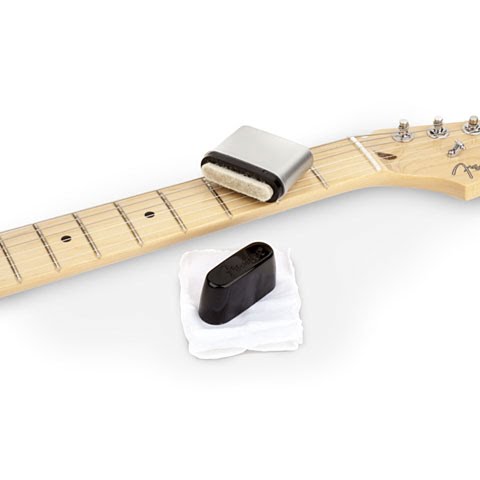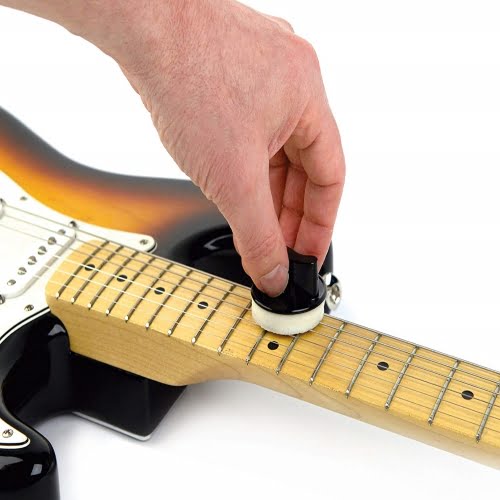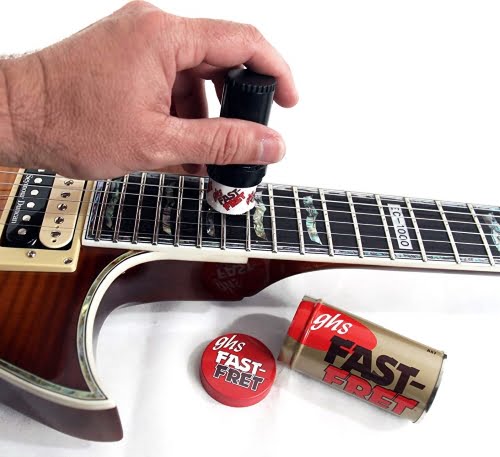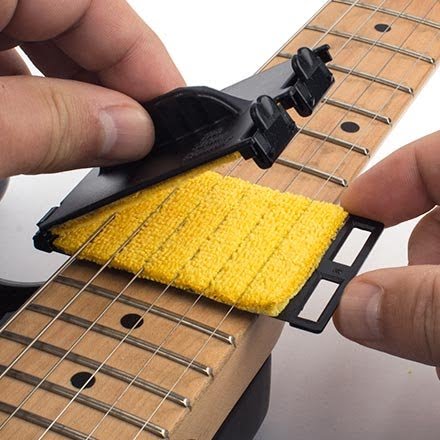- Home
- /
- Articles
- /
- Care & Maintenance
- /
- Restringing
Why Should I Change My Strings?
Guitar strings have a direct relationship to how the guitar sounds and performs. Over time, guitar strings get worn and dirty, which will have an ill-effect on the tone, feel, functionality and overall life expectancy of the strings. Dirty strings will also wear down your frets faster. The oxidized dirt becomes corrosive and jagged, much like having little files grinding down on your frets while playing. Fret repair is expensive, but you can postpone that trip to the shop for a long time, just by cleaning and changing those strings regularly.
How Often Should I Change My Strings?
For strings to stay in tune, they should be changed regularly. Old, dirty strings will not hold their intonation or tune very well.
String changes should be based on the needs of the player and the condition of the strings. Many touring pros will change a set of strings either every night or every other night, but someone who plays casually at home may get three months out of a set. So, other than when they start breaking, how do you know it’s time to change them?
If you run a finger underneath the strings and feel dirt, rust, or flat spots, it is time to change them.
If your hands sweat a lot when you play, this will speed up the corrosion of the strings. You can prolong the life of the strings by simply cleaning them after each use. You can use a dry cloth to wipe them down, or you can purchase a product like The String Cleaner, which is designed to clip above and below your strings to clean them from all angles. Another method is to use a string cleaning lubricant such as Fender Speed Slick Guitar String Cleaner, MusicNomad Fuel-String Cleaner and Lubricant, the D’Addario XLR8, or GHS Fast Fret. These products are designed to clean your strings so that they are like new again, with the additional benefit of lubricating the string as well, for a lightning fast feel.
- [easyazon_link identifier=”B00B5LEAFE” locale=”US” tag=”lgs04-20″]Fender Guitar String Cleaner[/easyazon_link]
- [easyazon_link identifier=”B00EKPMRWA” locale=”US” tag=”lgs04-20″]Music Nomad MN109 String Fuel Cleaner and Lubricant[/easyazon_link]
- [easyazon_link identifier=”B005FKF3N4″ locale=”US” tag=”lgs04-20″]Planet Waves XLR8 String Lubricant/Cleaner[/easyazon_link]
- [easyazon_link identifier=”B0002D0CQC” locale=”US” tag=”lgs04-20″]GHS Strings FAST FRET[/easyazon_link]
Note: Clicking the above links will take you to further information, current prices and customer reviews on Amazon.













